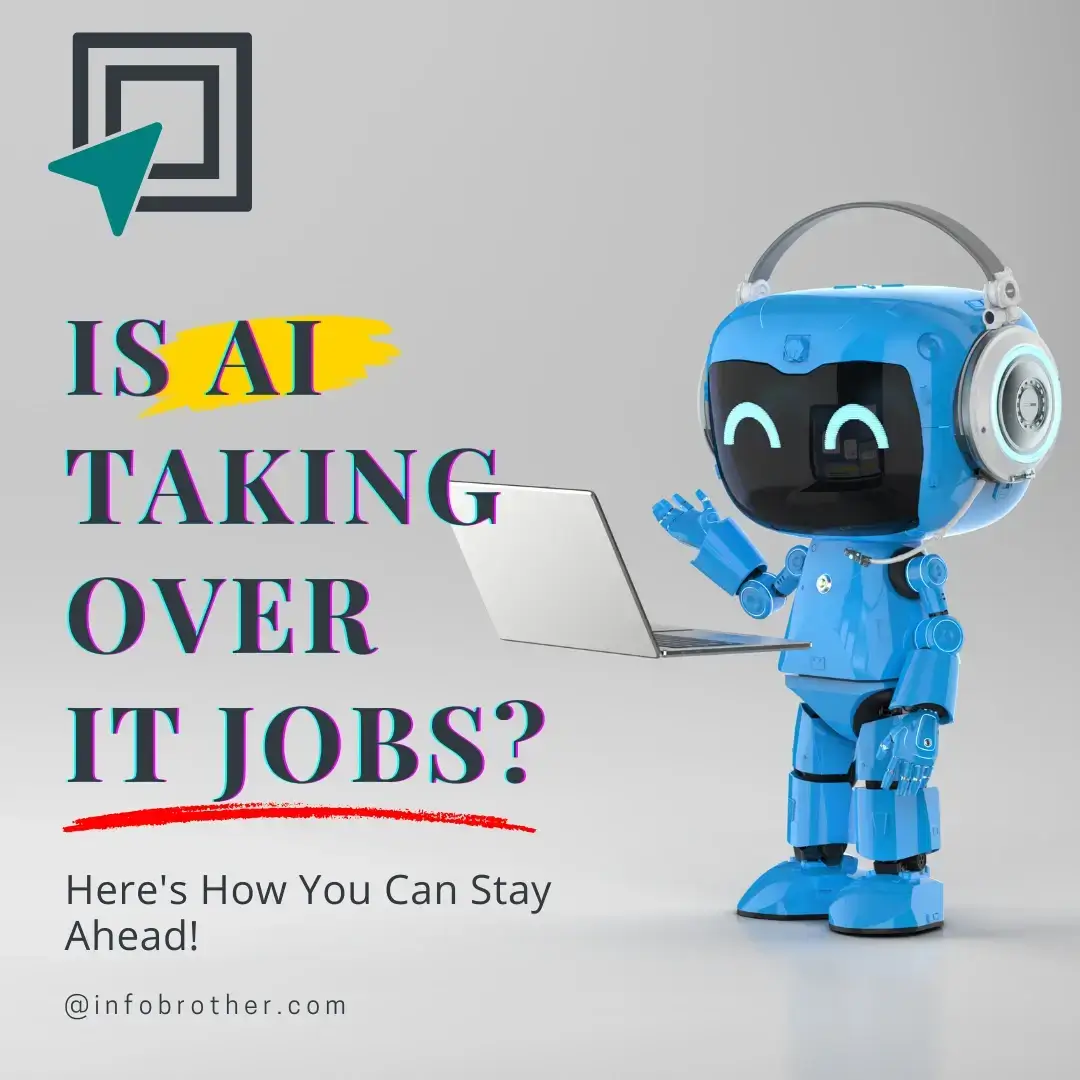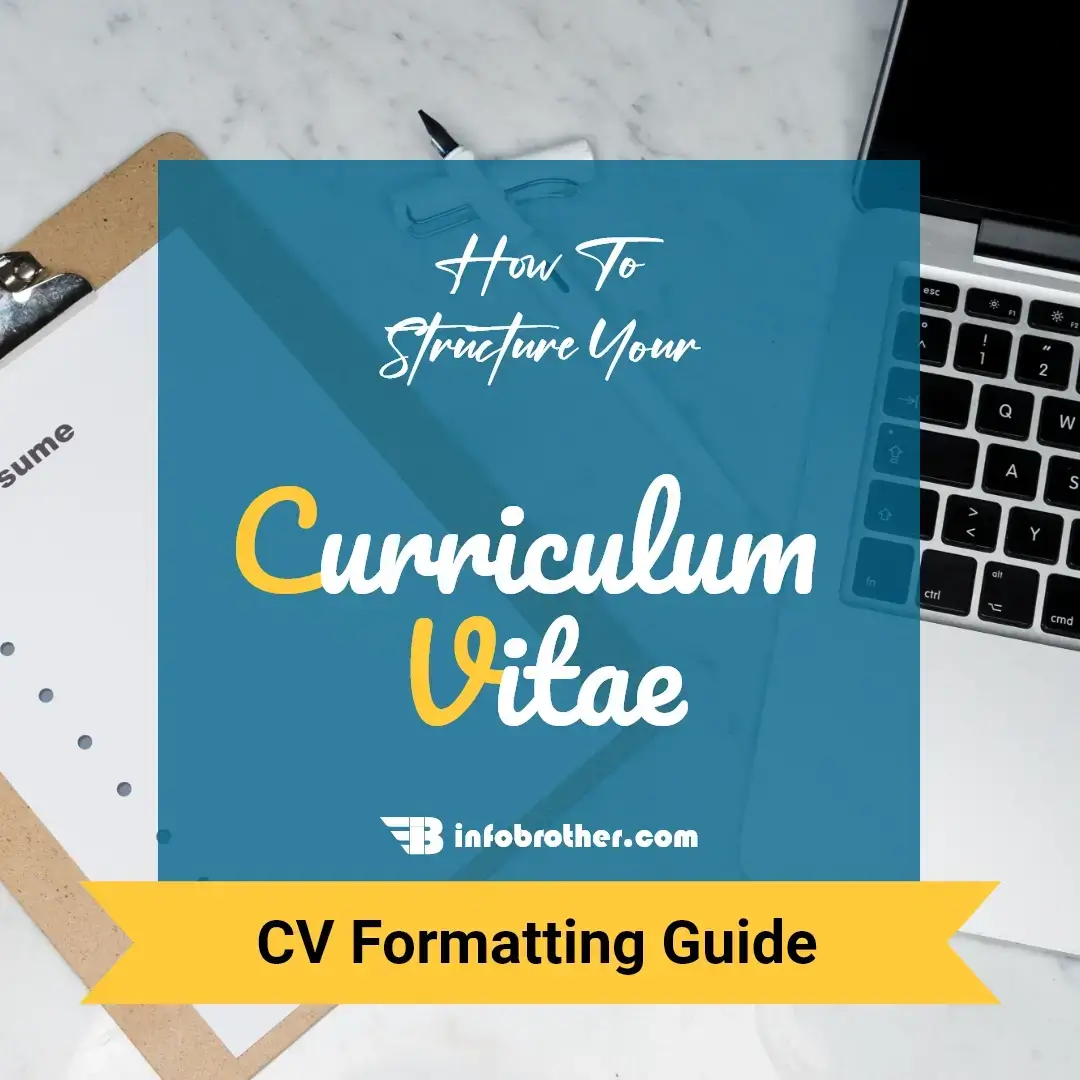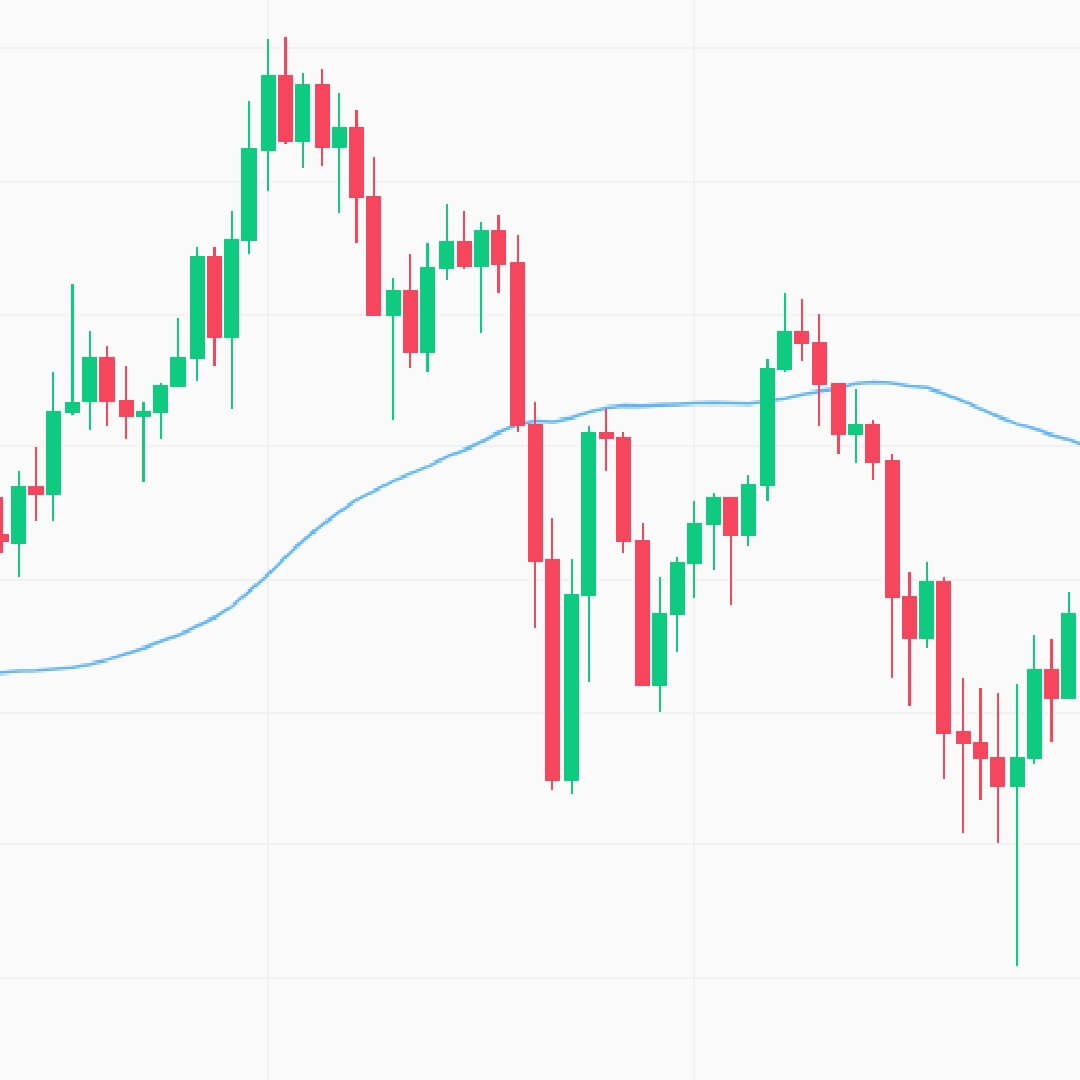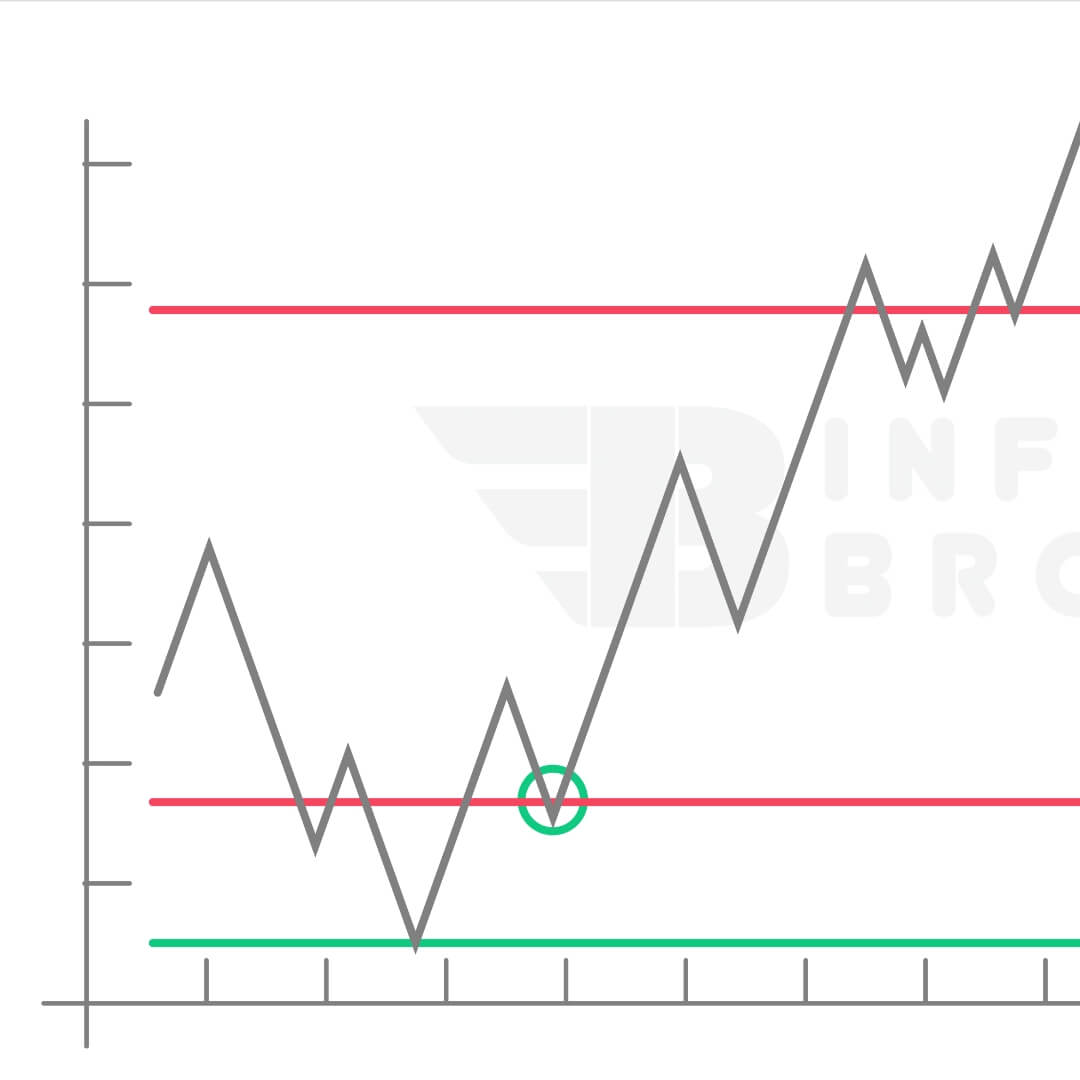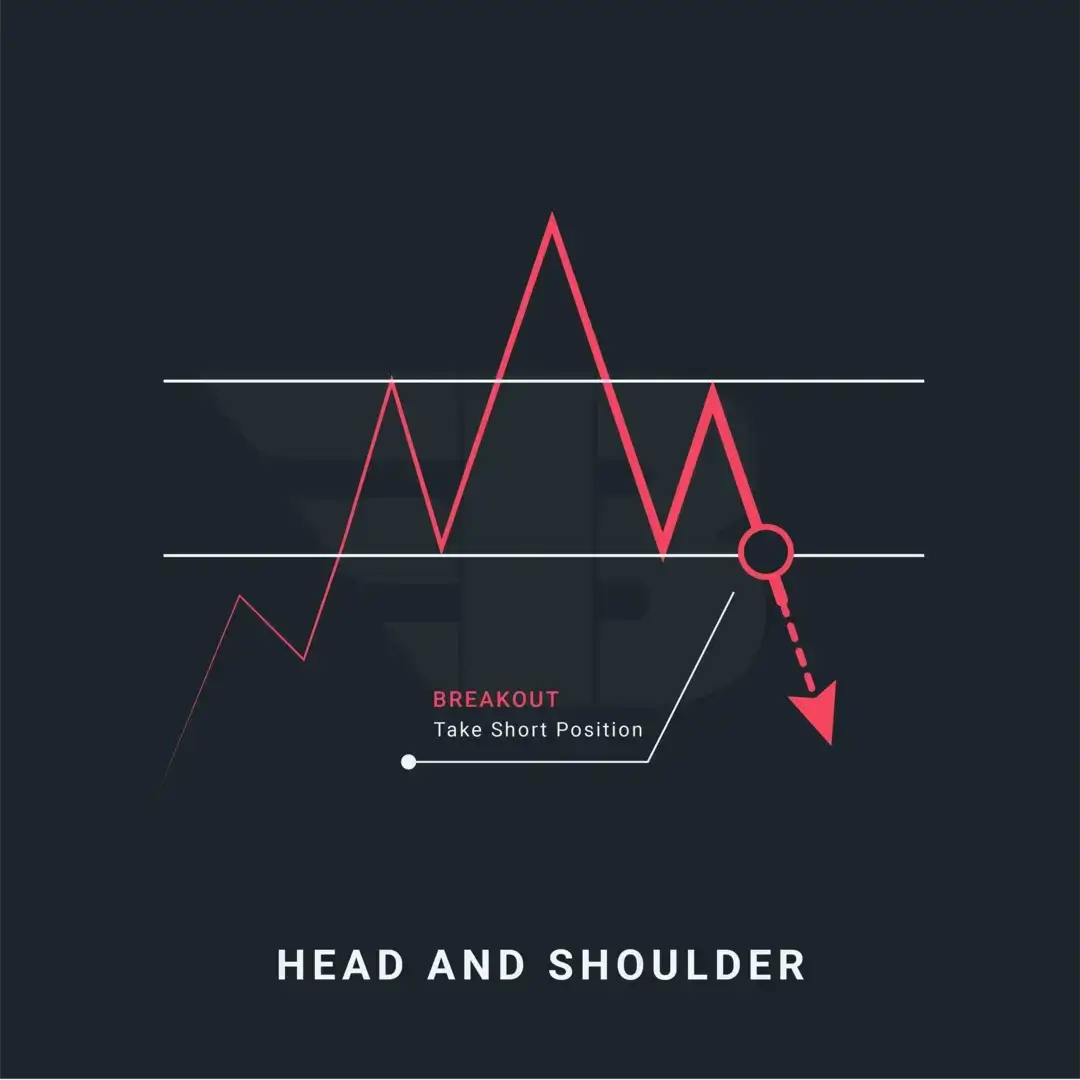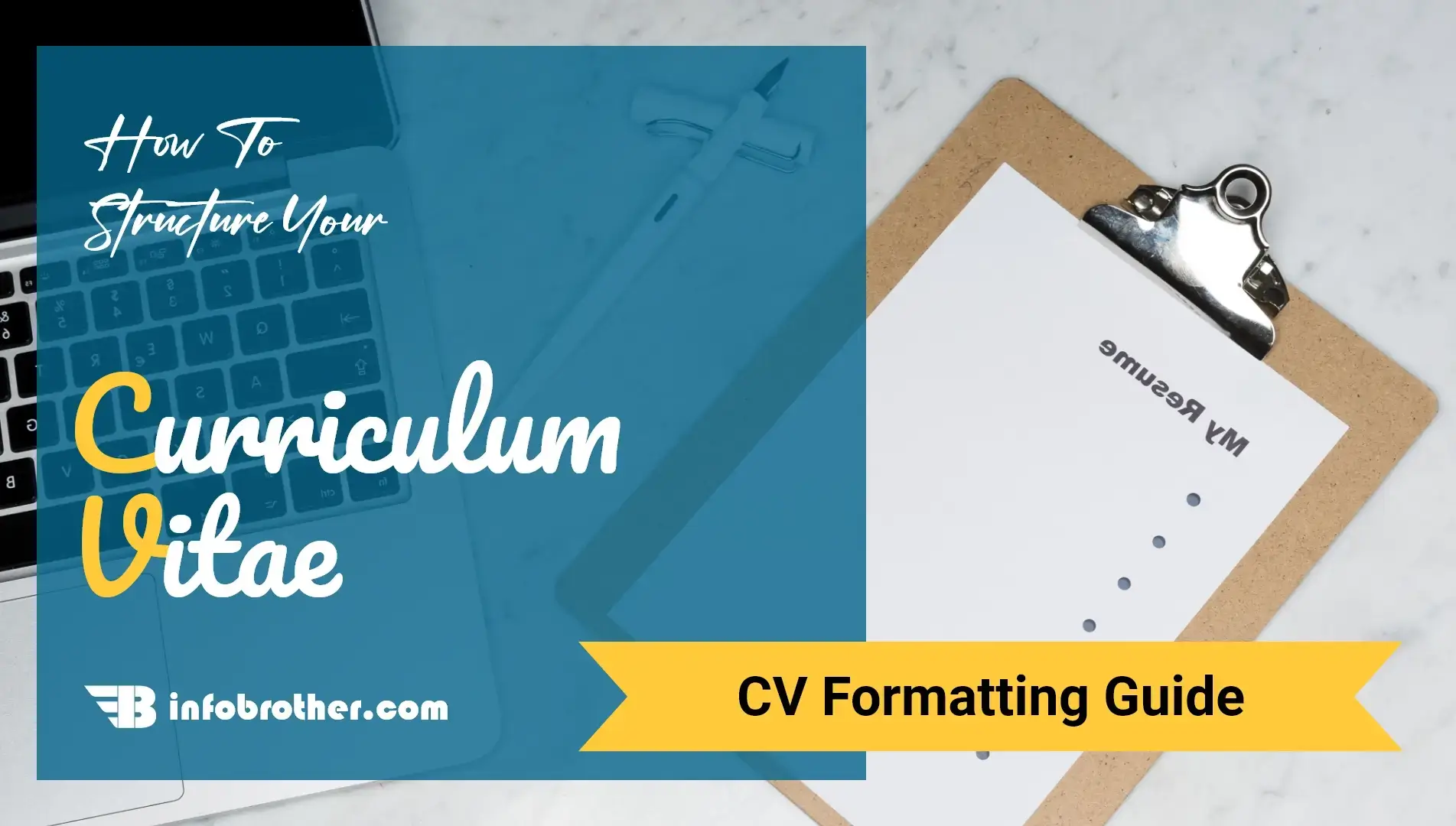
How to Structure a Professional Resume / CV
Complete Guide to Creating and Formatting Resumes & CVs
When applying for employment, your CV, which stands for curriculum vitae, or Resume, is the thing that gets you a job. A CV gives you the chance to highlight your training, work history, and talents so that you can effectively market your qualifications to prospective employers.
Did you even know that applicant tracking systems automatically reject 70% of job applications without ever reading them? This statistic highlights how crucial it is to customise your CV for each job you apply for.
In this tutorial, we'll learn how to style our resumes so that they may be scanned by applicant tracking systems and sent to the HR department.
When creating a CV, the first step is deciding what information should be included. We likely have a tonne of ideas for things to put in our CV, but we need to choose precisely where these items should go. Should the experience part come before the education portion? Do I need to mention my interests and hobbies? Would it even matter to the hiring manager if I didn't put my photo on my resume?
When creating a resume, there are several factors to take into account and numerous factors to disregard. And in this post, we'll address all of your queries that could aid in the creation or revision of your resume.
The following are a few key components that any professional Resume has to include:
- 1. Your Name and Job Title
- 2. Profile (Resume summary or Objective)
- 3. Contact Information
- 4. Work Experience
- 5. Education
- 6. Certification
- 7. Skills
Above, we've outlined the key sections that every resume has to include. If you have added these parts to your resume and there is still space available, you may add these optional sections as well. In particular, if you're a new graduate with no work experience, these optional sections will be beneficial.
Even if you have no professional experience, these optional sections can help you gain interviews and jobs. You may demonstrate that even if you lack actual job experience, you do have some experience working in a team and completing tasks by using areas like projects and awards.
The major components of a resume are stated above. Let's now explore each area and discover what's crucial to put in each one, as well as how to organise our resume by combining these sections.
The majority of expert recruiters advise us to format our resume or CV as follows:
- You should start with your name and professional job title.
- Next, a resume summary or objective is provided to catch the HR manager's eye.
- Next is the contact information.
- The next section is about work experience to include.
- Your educational background comes after work experience.
- The next section is devoted to certification, which displays the essential certification.
- Relevant Hard and Soft Skills come next.
- Finally, if there is still space on the resume, we may add some extras like languages, projects, honours, etc.
Let's go through each of these areas one by one and explain how to complete them correctly.
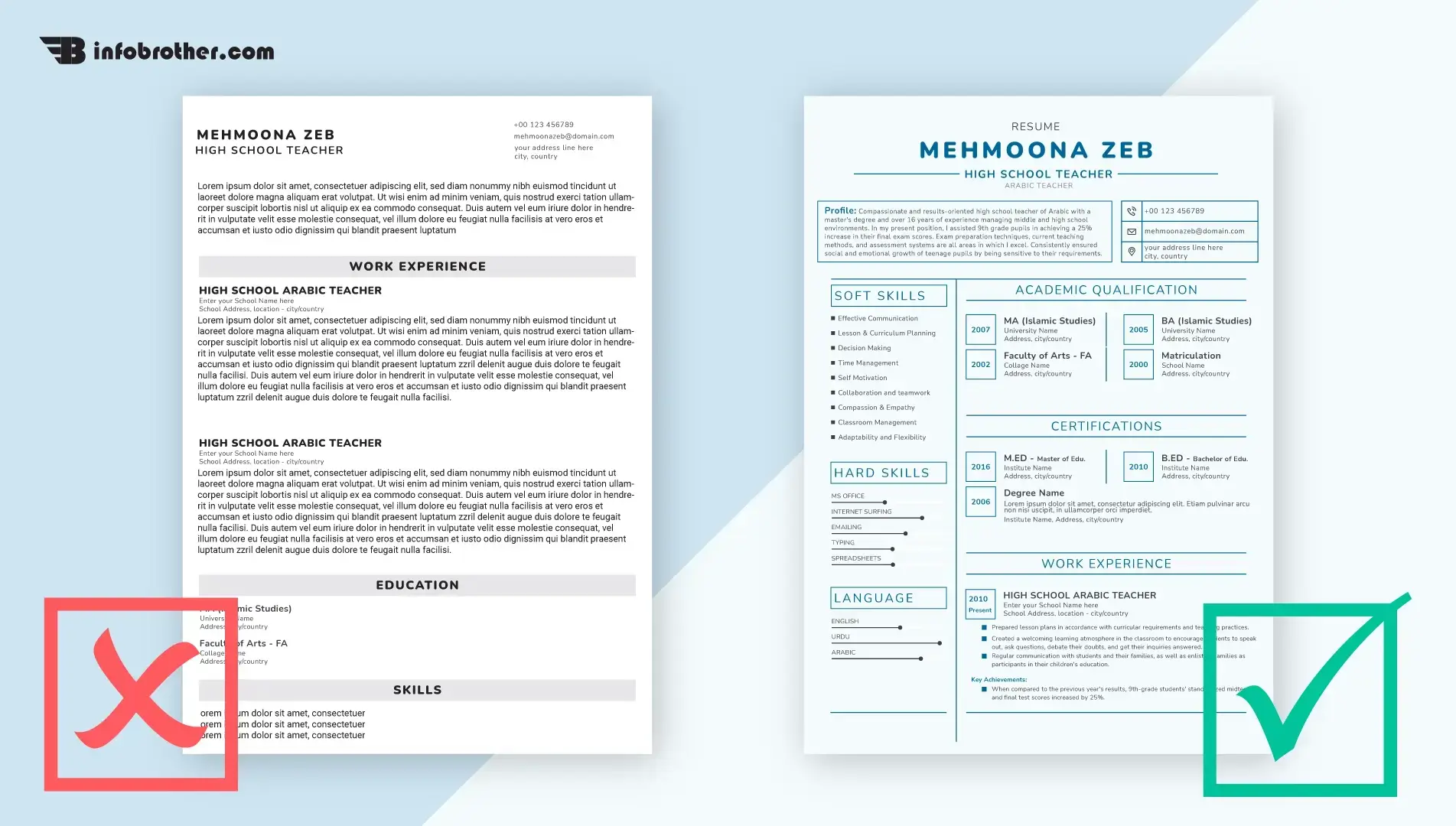
Download This Resume Template Minimalist & Professional Single Page Resume Template
Your name should be very self-explanatory, right? However, perhaps going over some of the best practises is still a good idea. We'll want to use the exact same name that is specified in our academic record in order to keep things easy. Use your real name, not the one you use on social media, like a Ninja Bro. It's best to use your entire name as it appears on your birth certificate.
For Example:
[first name] [last name]: eg. 'Sardar Omar'
When reviewing your CV, the first thing a potential employer will notice is the job title.To create a strong first impression, it is crucial to write a professional job title. Writing the job title is necessary for both applicant tracking systems (ATS) and recruiters. Most businesses scan CVs using ATS technology so they can quickly and accurately discover the ideal employee. And we must ensure that our CV passes this examination.
Robert Eric Johnson
Senior Software Engineer
Dr. Robert (Eric) Johnson (Senior Software Engineer).
To make sure you stand out to recruiters and applicant tracking systems (ATSs), the simplest and most efficient strategy is to match your professional titleto the desired position. For instance, if a corporation is looking to hire a "software engineer," you may simply follow their example and utilize this title.
Read More:The Right Way to List Job Titles on Your Resume in 2024.
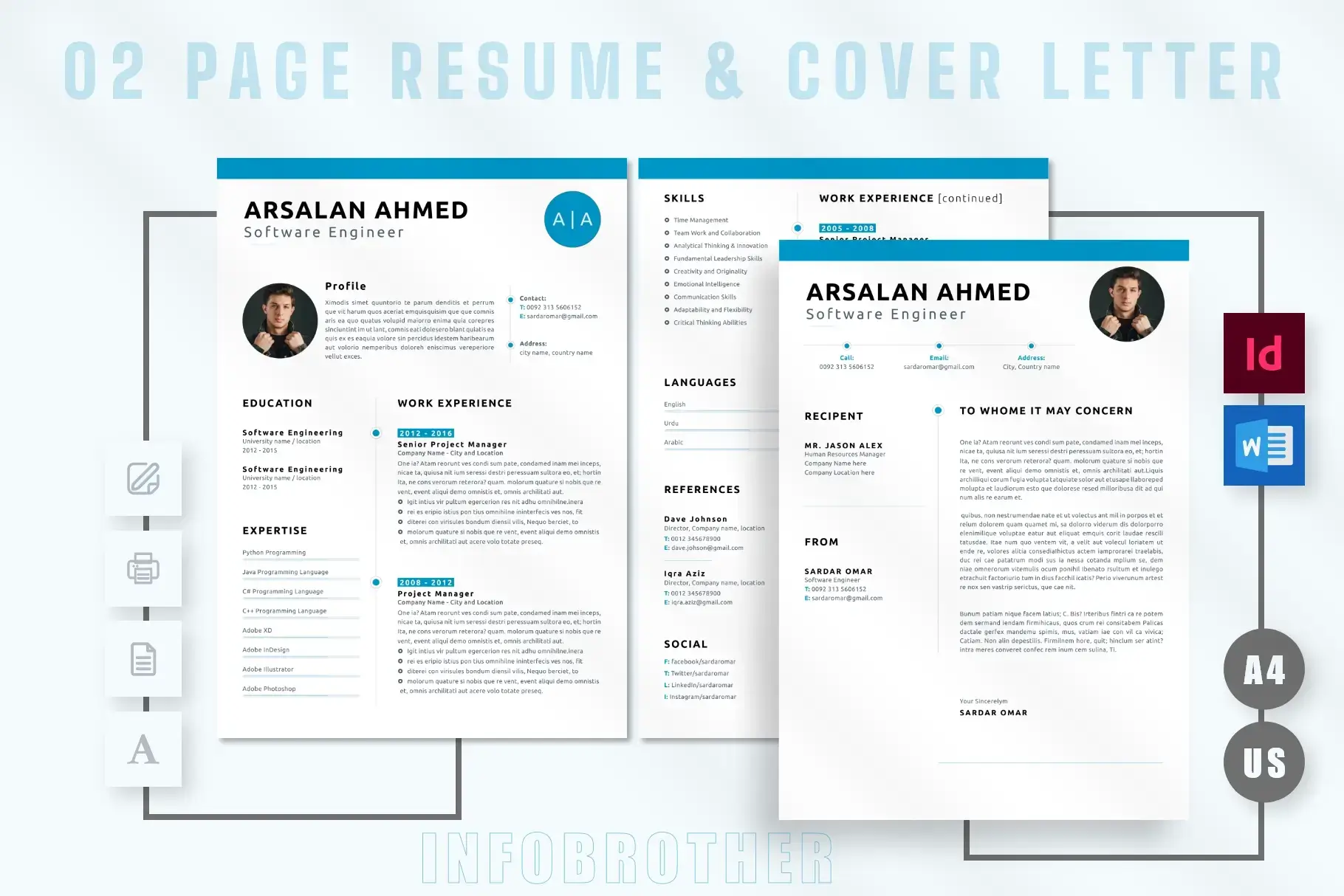
Download This Template: Includes a Cover Letter for a Complete Professional Package.
In one or two sentences, a decent resume summaryshould emphasise some of your greatest accomplishments to date, name your occupation, and include one or two of your strongest qualities. But in order for your resume summary to stand out, it must also be customised to the requirements of the employer. A strong CV summary contains the following:
[Professional Title] + [Years of Experience] + [Top 1-2 Achievements] + [Most Relevant Skill(s)]
For Example:
Six years of experience as a talented copywriter for marketing firms. expert understanding of keyword optimization and SEO best practices. created original material that is beneficial to a range of target audiences using research skills. Wrote copy for marketing initiatives that saw a 40% rise in brand recognition.
A recruiter often examines your CV's summary and objectivefirst since they serve as an introduction to your resume. They will read the remainder of your resume if the summary or aim is appropriate for the position. If not, they will just stop here and continue on to the next.
Read More: How to Write a Professional Resume Summary? 50+ Resume summary examples.
Before we get into the specifics of the contact information,let's go through the contents of the section. The following is what you would put in your resume's contact information:
What Should be Included?
Contact Information:
- First Name, Last Name: e.g. "Sardar Omar"
- Professional Title: e.g. "Software Engineer"
- Phone Number: e.g. "+00 123 456789"
- Email Address: e.g. "[email protected]"
- Location: e.g. "Adelaide, Australia"
Optional Information:
- LinkedIn URL: e.g. https://www.linkedin.com/in/sardaromar/
- Social media: e.g. GitHub, StackOverflow, Medium, Quora, etc. Whichever is more relevant to you.
What Should You Avoid?
- Date of Birth - The HR manager doesn't need to know your age unless it's essential, like a position that says you have to be at least 21 years old. It is not a significant component in decision-making and can lead to age discrimination.
- Unprofessional Email Address.
[email protected]
[email protected]
Read More:How Should I Format My Contact Information on a Resume?
An effective CV describes your past, who you are, and why you are the best person for the position being sought after. That doesn't imply you should explain your whole life narrative, because the recommended resume length is still one page. Instead, this is where you market yourself and boast about your prior duties and accomplishments.
You should mention your prior positions in reverse-chronological sequence. We advise using the typical job experience structure,which looks like this, to ensure that your resume is simple to read and understand.
- Job Title and Position
- Name/description/location of the company
- Dates Employed
- Responsibilities and Achievements
06/2015 - PRESENT
Digital Marketing Manager
Company Name and Location
Responsibilities and Achievements - using bullet points
Online Marketing Magician - June 04, 2015 - Present
Company Name and Location
Only Responsibilities - using long paragraph
Always prioritize accomplishments above duties when possible. The HR manager has likely read identical applications with the same generic tasks over a hundred times by this point, so they are already aware of what your duties are.
Many people just highlight their tasks on a daily basis when mentioning their professional experience.If you want your application to stand out from the crowd, adhere to the following rules:
- List accomplishments rather than responsibilities.
- Use bullet points instead of long paragraphs:
- Use action verbs to open each bullet point.
- When it's possible, use numbers in your bullet points.
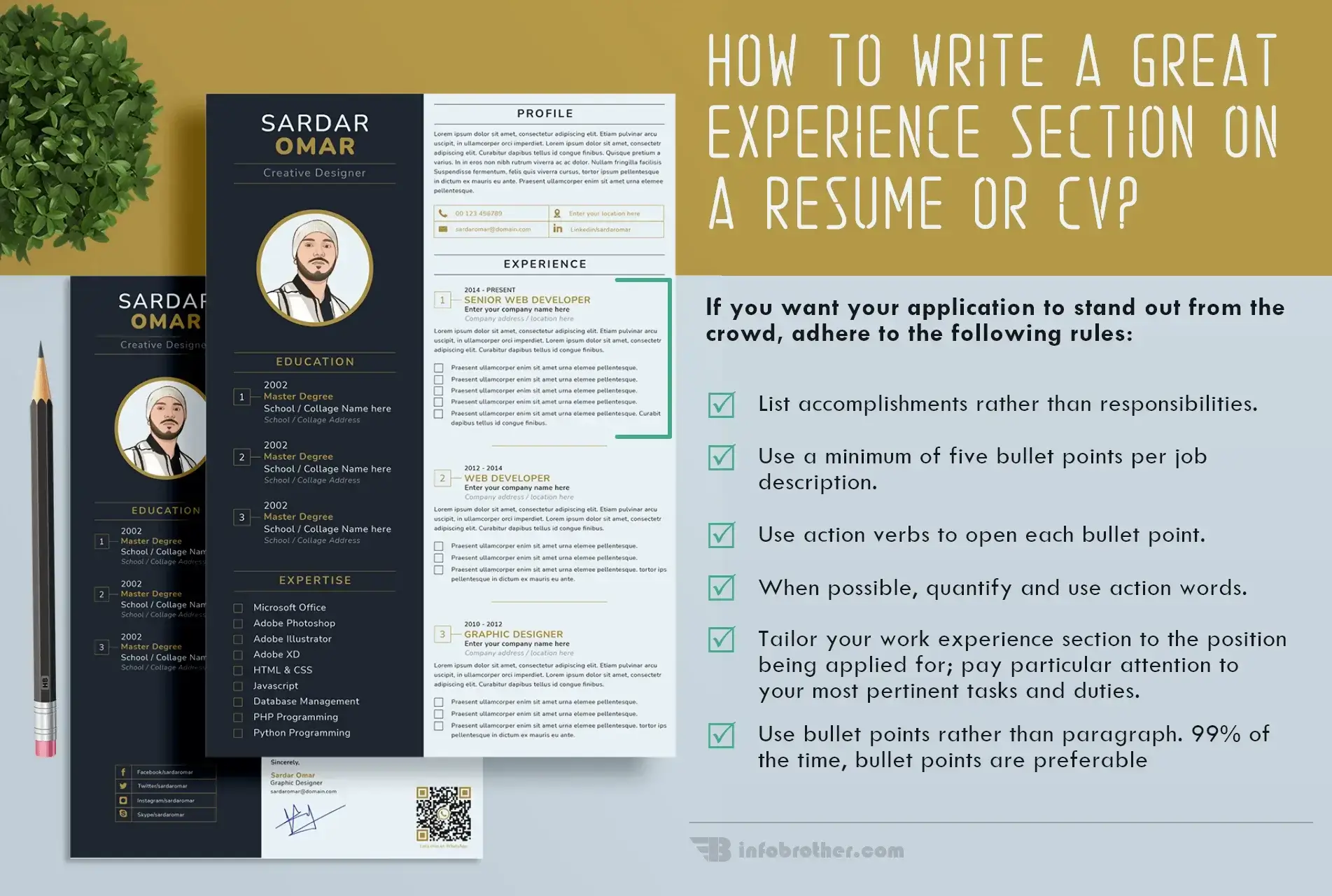
Read More:Learn how to write an excellent Experience Section for your Resume or CV.
Your CV must include a section about your education. However, deciding what to put in it and where to put it on the page can be challenging. Here we outline how to create the ideal schooling section for your circumstances.
The basic rule for organizing your education section is to move backwards in time, starting with the most recent educational entry and working your way forward from there.
In the specific order, you list the following characteristics:
- The degree you recently earned (or education in progress)
- The name of your school
- The address of your school
- Dates of enrollment and graduation (or expected graduation date)
- The subject you are studying and your major
- Your GPA (but only if it is more than 3.5)
- Any academic awards, essential courses, or dean's list placement
- Relevant extracurriculars, study abroad opportunities, and achievements
Here are some possible ways to write down the same degree:
It is optional to include a GPA on a resume. You should only include it if you graduated within the previous three years and have a GPA of at least 3.0. If not, ignore it. The majority of hiring supervisors won't be concerned about your GPA.
Read More:Learn How To List the Education Section on a Resume (With Examples)
The simplest and most popular option to integrate your certificates is to just create a new section for them. On your resume, first add a heading called "Certifications" and then add entries beneath it. Then list each certification in reverse chronological order under your chosen subheading. In other words, you begin with the most current certificate and work your way backward.
Include the following informationfor each resume certification entry:
- Name of Certification:
- Name of Certifying Agency or Body
- Dates of Obtainment
- Location (if the certification is location-specific)
- Expiration date (if relevant; obviously, don't put certificates on a CV that have passed their expiration date).
Here are some examples of how to correctly mention a certification that you presently possess on your resume:
May 2018
Human Resource Management (HRM)
Institute of Business Administration - Karachi
Quality Management System (QMS)
Chartered Quality Institute, Aug 2019
In addition, the following are some certification writing samples you should steer clear of.
1. HRM Certification
2. Quality Management Certificate Aug 2019
3. Project Manager Certificate 2002 - 2004
4. Board Certified in Inventory Management
Earning such a certificate demonstrates your commitment to your profession and gives proof of your abilities. A professional certification is evidence that you are qualified to do a task by adding it to your CV. And in other cases, it's this proof itself that can tip the scales in your favour.
Even if the certification is not essential for the position, it may still help you stand out from the competition, attract attention to your application, and make you seem like a good hire.
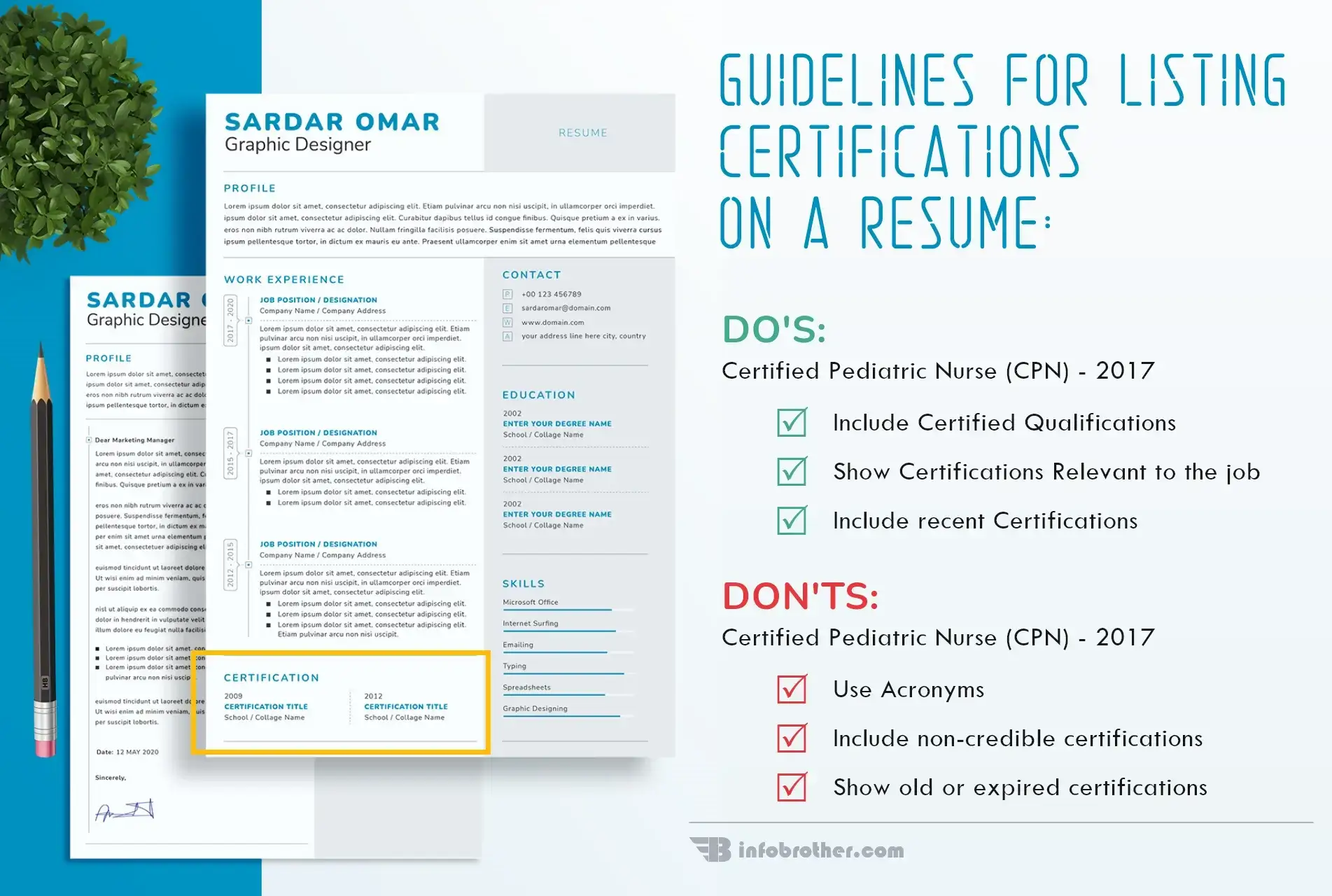
Read More:How to List Certifications on Resume: 2024 Guide - Dos and Don'ts for listing Certifications.
A combination of hard skills and soft skills is frequently required by companies in job descriptions. When compared to soft skills, which are personality attributes like leadership, communication, and time management, hard skills are those that are tied to specialized technical knowledge and training. For most careers, having both kinds of skills is essential to success and advancement.
Take into account the following factors to stand out when listing your skills on a resume:
- Match Your Skill Set to the Position
- Match Each Skill to Your Level of Competence.
- List a few universal skills
- Include your work-related skills in the experience section.
- Include your employment-related skills in the profile section.
Make sure your resume profile doesn't go neglected when you add skills. You have just one or two pages to work with, six seconds of the recruiter's time, and more than 400 competitors to surpass. Decide carefully which skills to mention, and make sure your resume doesn't contain any irrelevant information.
Read More:What are skills and how to write soft and hard skills on Resume: 2024 Guide - 200+ Soft and Hard Skills to Add to Your CV.
You may add a variety of alternative parts to your resume to make it more unique and targeted for each job application. If your resume is a typical one—the same document uploaded to every application—a recruiter will notice.
Adding multiple resume sections based on the application demonstrates that you took the effort to tailor your resume to the position. You may give prospective employers a glimpse into your work ethic as an employee by making an effort during the application process.
You may add the following optional parts to your resume:
- Awards and Honors
- Volunteer Work Experience
- Projects
- Hobbies and interests
- Extracurricular Activities
- Accomplishments
- Publications
- Languages
- Training
- Conferences
Pro-Tip:
Usually, the first five crucial components are sufficient to create a strong CV. When building your CV as a new graduate, the optional ones are typically more beneficial.
After discussing all the DOs for creating a CV, let's discuss the DON'Ts. Here are some things you should not mention in your CV:
While it was common practise in the past, including your complete address on your CV is no longer required. The recruiter won't stop by for a quick cup of coffee.
It could result in age-based discrimination.
For example, if you're looking for a position as an accountant, you don't have to include your Behance profile (a social media website for graphic designers).
Do not add it if, for any reason, you have worked there for fewer than 1-2 months (unless it was temporary employment). Even if you had a legitimate reason for leaving early, it could give the impression that you were fired or frequently changed jobs.
You shouldn't mention how good a cook you are if you're only applying for the position of software engineer. Only highlight the abilities and experiences that will help you succeed in the position you're looking for.
"I'm an excellent critical thinker," "I work well in teams," and "I'm very organized." Which of these three statements is true? It's easy: none of them have any genuine helpful information to provide. Only include abilities or experiences in your CV that you can support with evidence; otherwise, they won't be taken into consideration.
Keep your CV from becoming an infographic. Your images cannot be read by applicant tracking systems, thus your resume will be deleted immediately.
It is not necessary for the recruiter to know what you did 25 years ago. List only the most recent 10 years of employment in the section about your job history.
When working on your CV, the typeface may be the last thing on your mind.But particulars matter. And something as seemingly unimportant as the typeface on your resume can have a substantial influence on whether you land the job.
Think about how readable the resume is. Even if you have the finest CV in the world, the HR manager probably won't give you a call back any time soon if they can't see the typeface. Similar to this, if you choose a typeface that blends in with the background nearly completely, people could forget about your resume by the end of the day..
The majority of HR managers don't actually spend much time reviewing resumes. They focus on the resume layout first, and only afterwards do they read the contents. They won't determine if it's worth reading or not unless they have a nice layout (e.g., one page, attractive, scannable, etc.) and legible font..
In order to style your CV properly in terms of font, margins, and layout, let's go over the following:
What is the ideal font and size for resumes?
Generally speaking, we advise choosing a typeface and font size that stand out but not excessively. Consider the following suggestions if you want your resume to stand out from the other Times New Roman resumes:
- Take into account using the Roboto, Overpass, or Ubuntu fonts. These typefaces are contemporary, have a humanist aesthetic, maximise readability, and look fantastic everywhere.
- We advise using a font size of 10 - 12 points for standard tests and 14 - 15 points for section headings.
It's important to keep in mind that once you choose a font and font size, you should use that choice consistently across the whole resume.
Basic Layout Information:
Here is everything you need to know about resume layout:
Use 1.0 or 1.15 between text and the double line that follows a subheading. Feel free to modify this in accordance with the available space on your resume.
To make your resume's experience section easier to scan, use bullet points. Just be careful not to misuse them; keep them to a maximum of 6 points per segment.
Keep it to one page, with two pages at maximum if you have more than five years of experience.
One-inch margins are suitable for a typical resume that has a simple structure and few visual components. They appropriately distance your text from the page's edge so that your content stands out. Additionally, one-inch margins assist in making your resume seem well-organized and readable.
Your resume's primary text should be left-aligned or left-justified. This makes your resume easy to read and is a common practise for most professional documents. If you'd like, you may centre the resume heading, which typically contains your name and contact information. Section titles can also be aligned differently.
You may now go on to actually creating the major sections of your resume once you've mastered the fundamental structure and feel of it.

Follow the employer's instructions precisely, whether you're emailing, posting to a job board, or using application software to send your resume. For instance, depending on the applicant tracking system (ATS) used by the business, which may or may not be compatible with PDF files or Mac Pages, the file format that an employer requests may change.
They can also require you to upload a certain file type, depending on how they're requesting you to submit your resume. For instance,
- If you're uploading your resume online, the job posting website will specify which file type is acceptable.It could be a Word or PDF document.
- The employer will make it clear how they want you to deliver your resume if you're mailing it. They'll likely request that it be supplied as an email attachment and indicate whether they'd want a Word or PDF file. They can also ask you to paste your CV within the body of the email.
The majority of employment and career websites often accept both Word and PDF file formats. It is advised that you have both on hand in case a company requests either one or the other. Additionally, you should also think about keeping your CV as a Google Doc (this is especially useful if you apply to jobs on your phone often).
Important:
However, in cases when a specific file type is not given, PDF is a reliable option to guarantee that nothing is lost in the formatting and that your resume is seen just as you intended.
Let's quickly review the most crucial points that we have covered in this post. Be sure to include the following in your CV:
- The essentials. Contact details, a resume goal or summary, employment history, education, certifications, and abilities are all included.
- Optional parts such as extracurricular activities, projects, awards, training, hobbies and interests, volunteer experience, and so on.
- Relevant information. Mention just the skills and experience that enable you to thrive in the position for which you are seeking.
- Metrics and numbers. You have a better chance of standing out from the crowd if you can support your experiences with statistics.

Sardar Omar
I did my hardest to present you with all of the information you need on this subject in a simple and understandable manner. However, if you have any difficulties understanding this concept or have any questions, please do not hesitate to ask. I'll try my best to meet your requirements.
Disclaimer:This material is provided purely for educational purpose and is not intended to provide financial advice.




